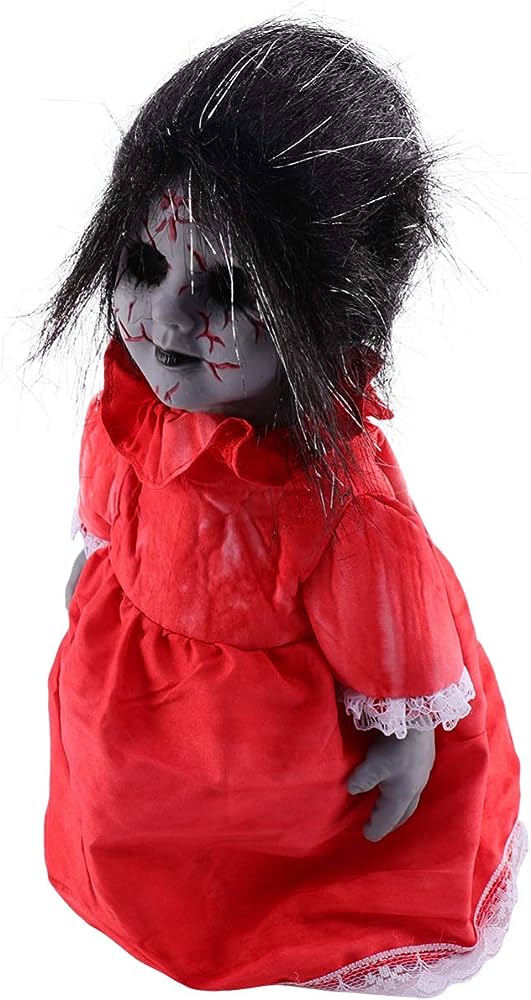Dolls have been a part of human culture for thousands of years, representing childhood innocence, companionship, and imagination. However, in contemporary times, dolls have taken on a darker and more sinister connotation, becoming synonymous with fear and horror. The evolution of creepy dolls is a fascinating and complex topic, and in this essay, we will explore their origins, their evolution over time, and their impact on popular culture.

Origins of Dolls
Dolls have been around for centuries, with evidence of dolls dating back to ancient civilizations like Egypt, Greece, and Rome. The earliest dolls were made from natural materials like clay, wood, and straw, and were used in religious ceremonies and for educational purposes. Dolls have always been a part of childhood play, and for many children, dolls are comforting and familiar companions.
The Emergence of Creepy Dolls in Popular Culture
The concept of a creepy doll can be traced back to the 17th century when dolls were used as a form of punishment. Parents would give their misbehaving children dolls that were deformed or made to look frightening. Hoping to scare them into good behavior. However, it wasn’t until the 20th century that creepy dolls began to emerge in popular culture.
The Iconic Chucky
One of the most iconic and memorable examples of a creepy doll is Chucky from the Child’s Play franchise. Chucky is a possessed doll that terrorizes a young boy and his family. And has become a cultural icon in the horror genre. Chucky’s popularity has spawned countless sequels and merchandise, cementing his status as one of the most recognizable horror characters of all time.
The Haunted Annabelle
Another popular example of a creepy doll is Annabelle from the Conjuring universe, who is based on a real-life haunted doll. Annabelle has become a cultural phenomenon in her own right, with her own movie franchise and merchandise. Annabelle’s popularity speaks to the enduring fascination with creepy dolls, and their ability to capture our imaginations and tap into our deepest fears.
The Cultural Significance of Creepy Dolls
Creepy dolls have become more than just a horror trope; they have become a cultural phenomenon. They represent childhood innocence corrupted, and they tap into our primal fears of the unknown and the supernatural. Additionally, creepy dolls have a nostalgic quality that reminds us of our own childhoods and the toys we used to play with. They have an enduring appeal that transcends generations and cultures, making them a staple of popular culture.
Origins of Dolls
The concept of dolls dates back thousands of years and has been used to serve various cultural, religious, and emotional functions. From ancient civilizations to modern times. Dolls have played many roles, such as educational tools. Playthings, religious and spiritual objects, or even objects of ritual significance.
The use of dolls as a source of terror emerged around eighteen hundred (1800) in an era historically came after an outlay of war efforts, population growth higher in the cities. National reforms and factory-production booms and critical increasing social in balance subjected woman and affordable studio space.
Strategies of marketing the tourist industry towards domestic consumers had advanced the psychological appeal of dolls when child play material spread across gendered differences in physical play. Which introduced safety emulations and commercial adverts centered primarily on sexed norms within those days.
The Future of Creepy Dolls in Popular Culture
The popularity of creepy dolls in popular culture shows no signs of slowing down. With new movies and TV shows being released regularly, it is clear that they have become a staple of the horror genre. However, there is also a risk of over-saturation. With audiences becoming desensitized to the trope. It will be interesting to see how filmmakers and writers continue to evolve the concept of creepy dolls to keep them fresh and terrifying.
Creepy Dolls in Contemporary Art
Creepy dolls have also made their way into contemporary art, with artists using dolls as a medium to explore themes of innocence, childhood trauma, and fear. Artists like Cindy Sherman and Laurie Simmons have used dolls in their photography to create unsettling and thought-provoking images. These artists show that dolls can be used to explore complex themes that go beyond the horror genre.
Conclusion
The evolution of creepy dolls is a fascinating and complex topic that highlights the enduring appeal of dolls in popular culture. From their origins as toys to their current status as cultural icons. Creepy dolls have captured our imaginations and tapped into our deepest fears. As the genre continues to evolve, it will be interesting to see how creepy dolls continue to play a role in popular culture.